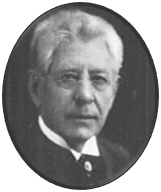"Why I Became a Surgeon" a historical perspective

"Why I Became a Surgeon" posters adapted from Dr. Reder's 1910 paper
In 1910, surgery in mid-America was emerging as a medical specialty: no board, no formal training scheme, and no defined route to practice. Dr. Francis Reder, a general surgeon of the time, established order in the surgical field by leading an inclusive medical group, The Missouri State Medical Association.
Despite surgery’s novelty, many surgical innovations were created during this era that forever changed how surgeons operated. Dr. Reder, in response to these innovations, wondered about the individuals behind them. Specifically, what had motivated these people to undertake a profession that was known to be inherently difficult and time consuming?
In order to obtain an answer, Dr. Reder ambitiously sought the opinion of approximately fifty well-known surgeons, inquiring as to why they chose a career in surgery. Amazingly, he received forty-four responses that offer remarkable insight into an exciting time in the field of surgery. The responses were collected from all over the world, many having to be translated from a surgeon’s native language to English. The responses, both original and translated, were printed in The Journal of the Missouri State Medical Association in November 1910, as well as presented by Dr. Rederat the Missouri State Medical Association, in May 1910. The work was titled, “The Surgeon And His Work”.
These letters and publication came into the possession of Paul H. Young, MD, a neurological surgeon in St. Louis, MO. Dr. Young is mid-America’s go-to surgeon for complex and/or re-operative spinal procedures. In addition to a published author, Dr. Young has created the first neurosurgical training entity on the African continent, and has maintained it remarkably. Through a long friendship with Dr. Hiram C. Polk Jr., these documents came into the possession of the Price Institute of Surgical Research.
Copies of the original letters, along with a synopsis of each corresponding surgeon, adorn the walls of the Price Institute. In addition, copies of the material have been donated to the University of Louisville Medical Library for students to utilize. The Department of Surgery is honored to host these special tributes in perpetuity and expresses appreciation to Doctors Reder and Young.
